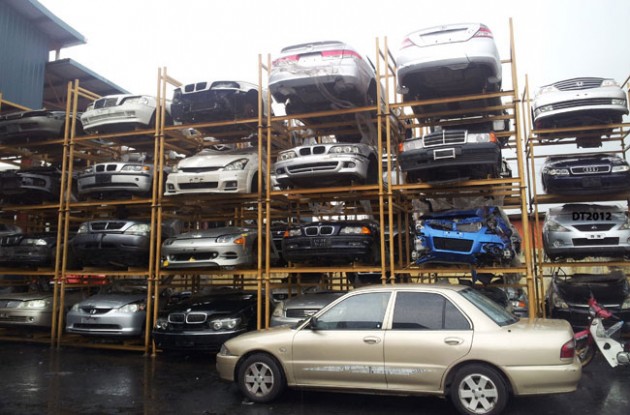The Vehicle End of Life policy could be reintroduced in the upcoming National Automotive Policy (NAP) revision, The Star reports. An anonymous industry source has told the daily that as a general rule, the policy could see 10- to 15-year old vehicles having to go through compulsory inspections to determine their roadworthiness.
“With the policy in place, consumers could opt for newer cars rather than using clunkers that are way past their lifespan. This would ensure continued new sales but it will only be successful with the right incentives,” he said, adding that the business of vehicle inspections could be extended beyond Puspakom centres to include qualified panel workshops.
The source did not say what would happen to vehicles older than 15 years – until a proper scrap policy is put into place, we are left guessing. The Vehicle End of Life policy was first announced in the 2009 NAP revision, stating a compulsory yearly inspection for vehicles older than 15 years as the first step towards the implementation of a full vehicle scrap policy. This was soon dropped following public protest.
Additionally, the source told The Star that regulations could be introduced for the after-market industry, including workshops, tyres and accessories shops, spare parts centres and car dealers.
The latest NAP revision is expected to be announced at the end of this year. For a sneak peek at what it could entail, read our report on our session with the MAI.
Looking to sell your car? Sell it with Carro.












AI-generated Summary ✨
Comments mainly express concern that the Vehicle End of Life policy could burden low-income Malaysians who cannot afford new or replacement cars due to high prices, taxes, and loans. Many feel the policy is unnecessary or exploitative, citing issues like high car costs, corruption, and existing problems with car importation and used car tampering. Some suggest implementing incentives or improving public transportation before such policies. There is skepticism about government motives, viewing the policy as a way for cronyism or revenue collection rather than public safety or environmental benefit. Several comments emphasize that old cars can still be safe and well-maintained, and worry that this move may unfairly impact ordinary citizens while benefiting car dealers and cronies. Overall, sentiments are largely negative, highlighting concerns about affordability, corruption, and the true intent behind the policy.